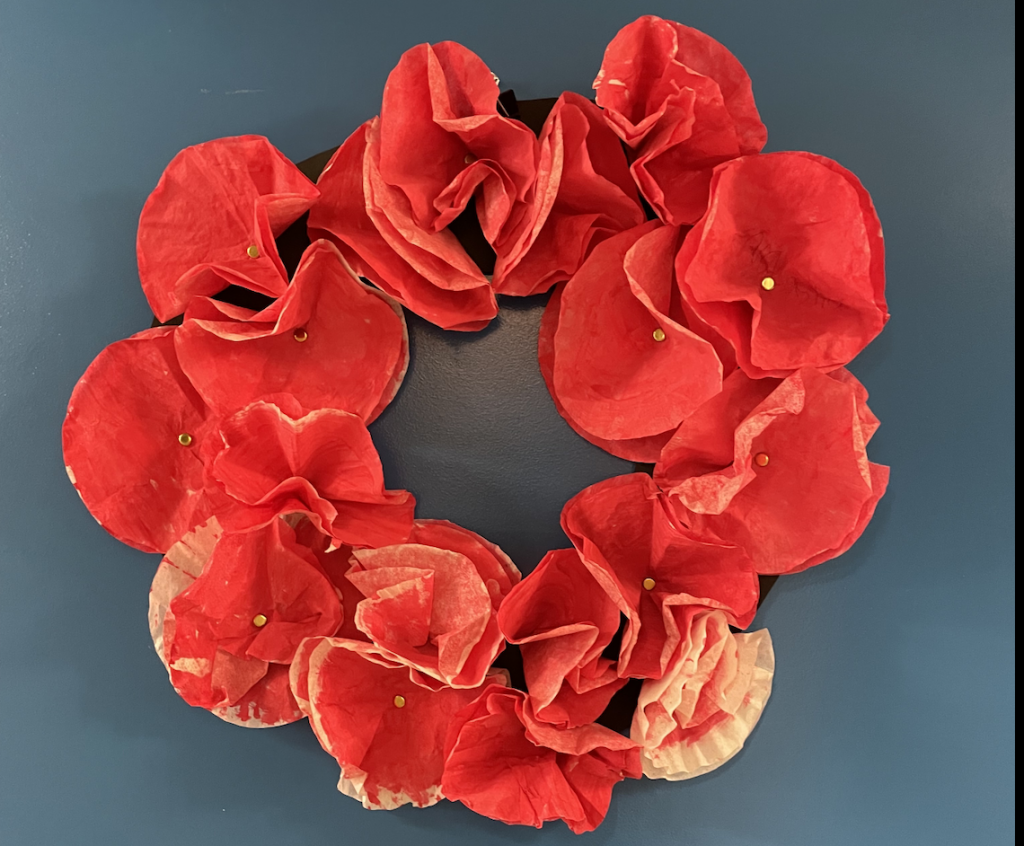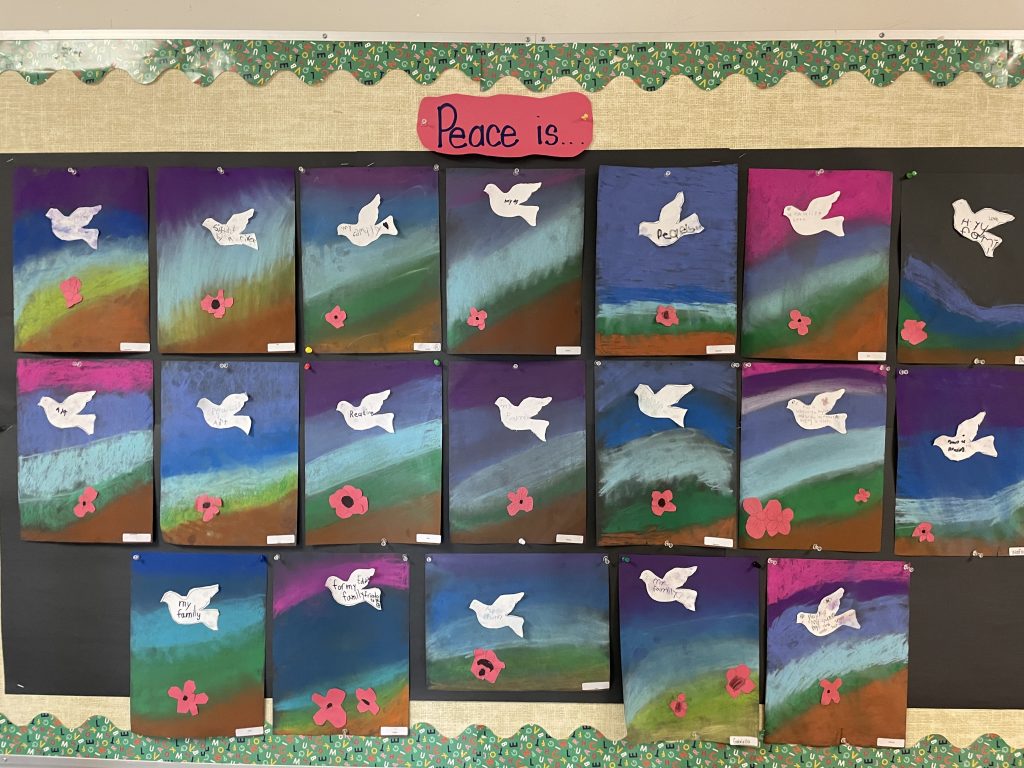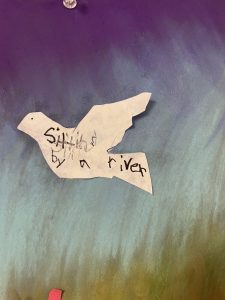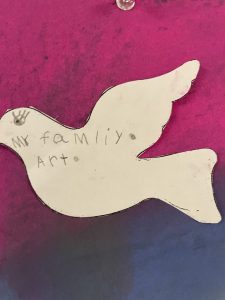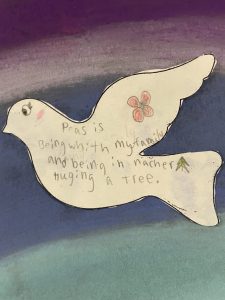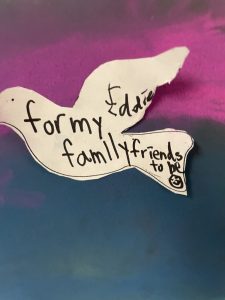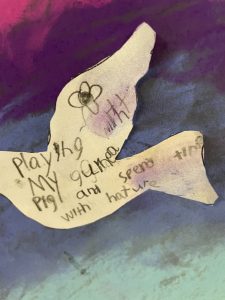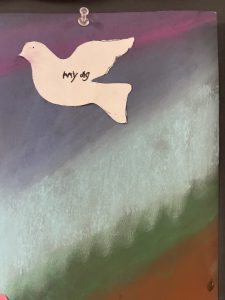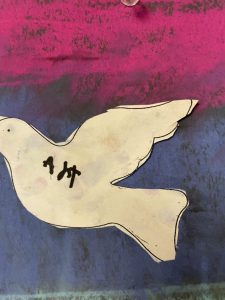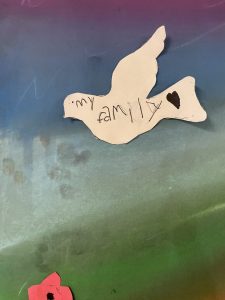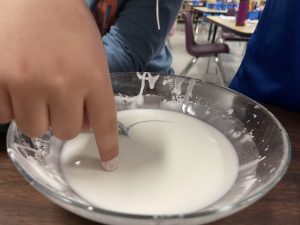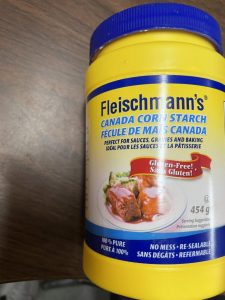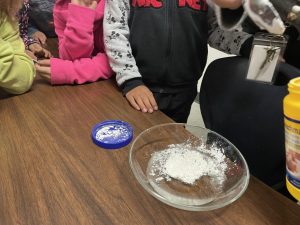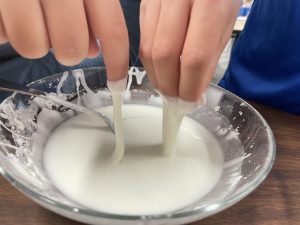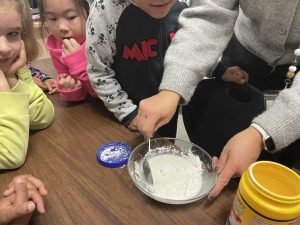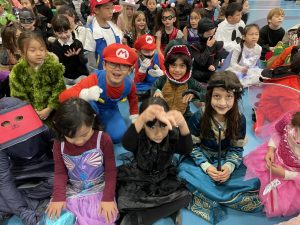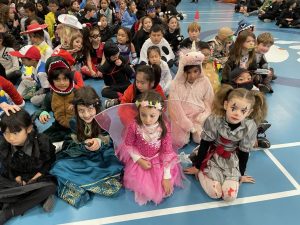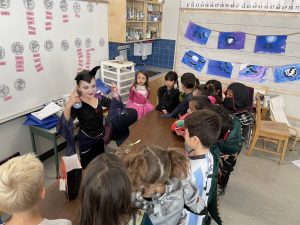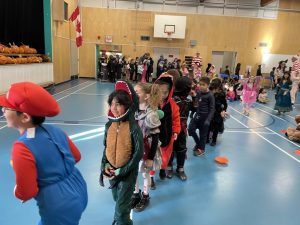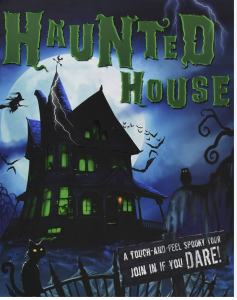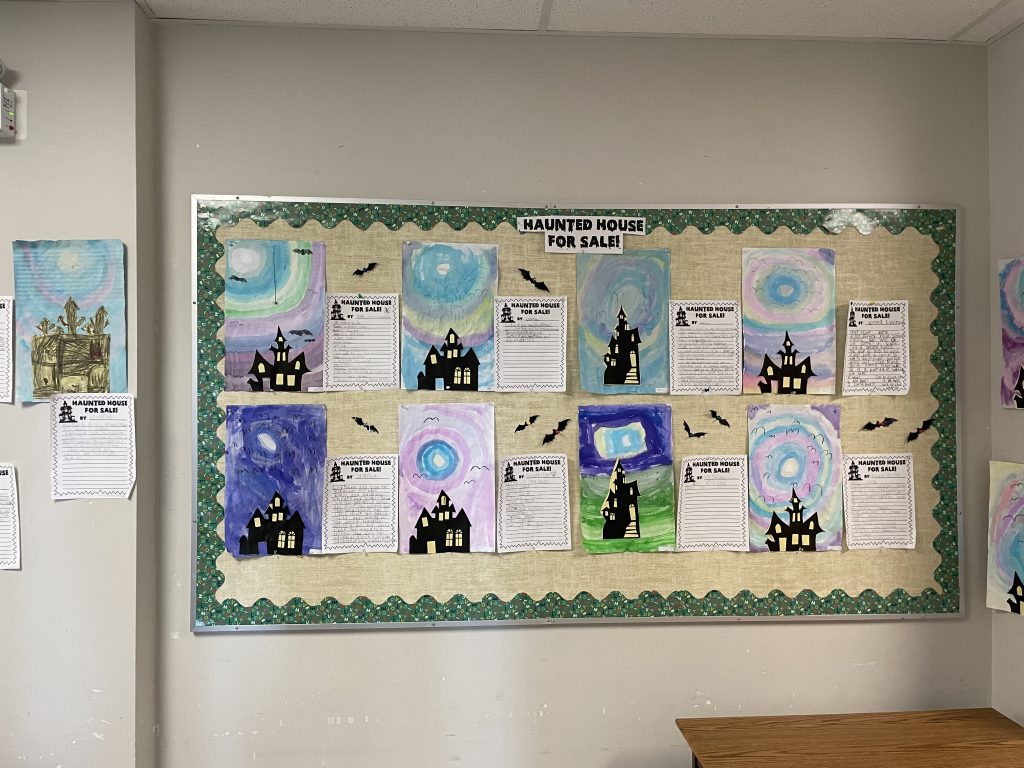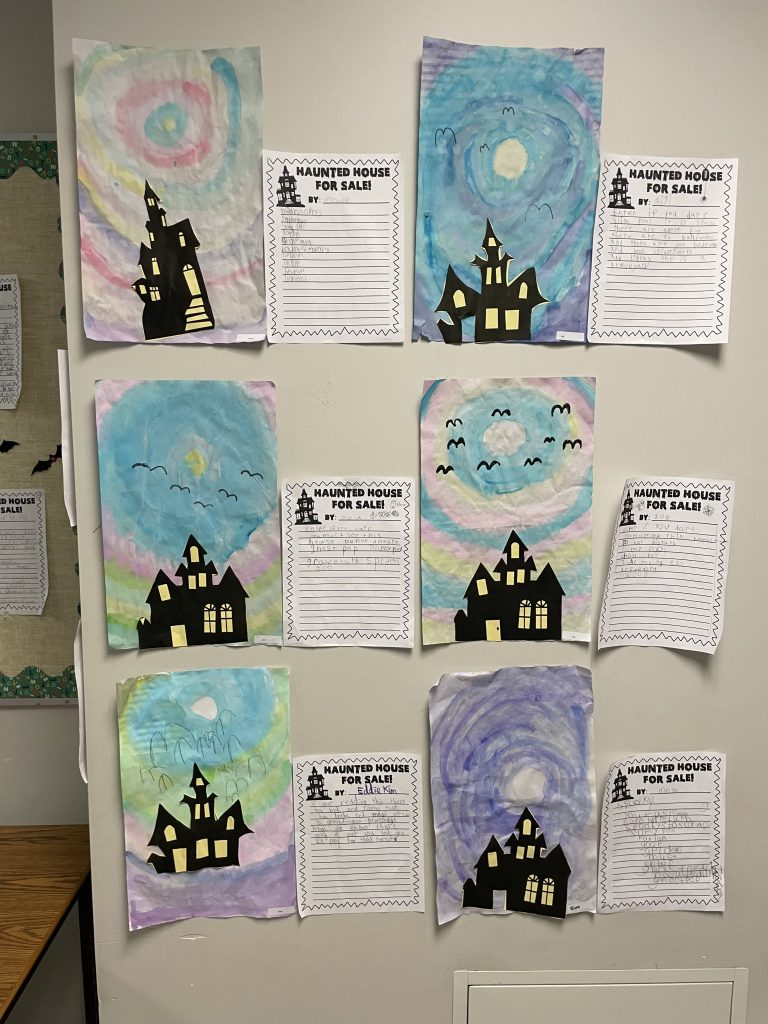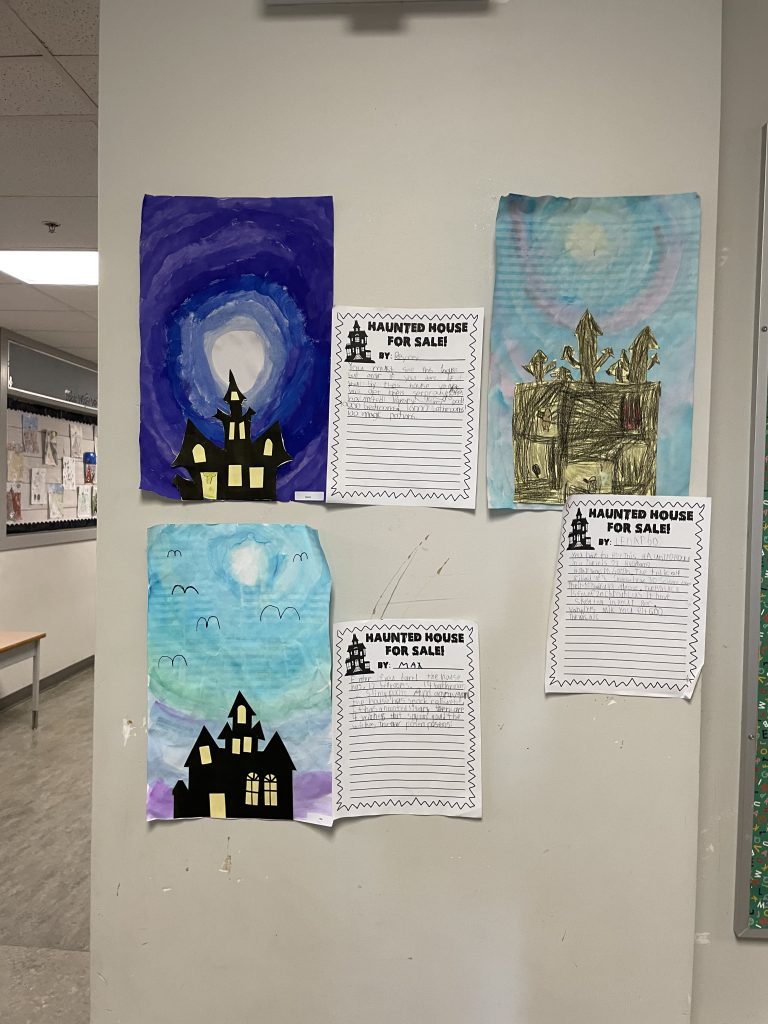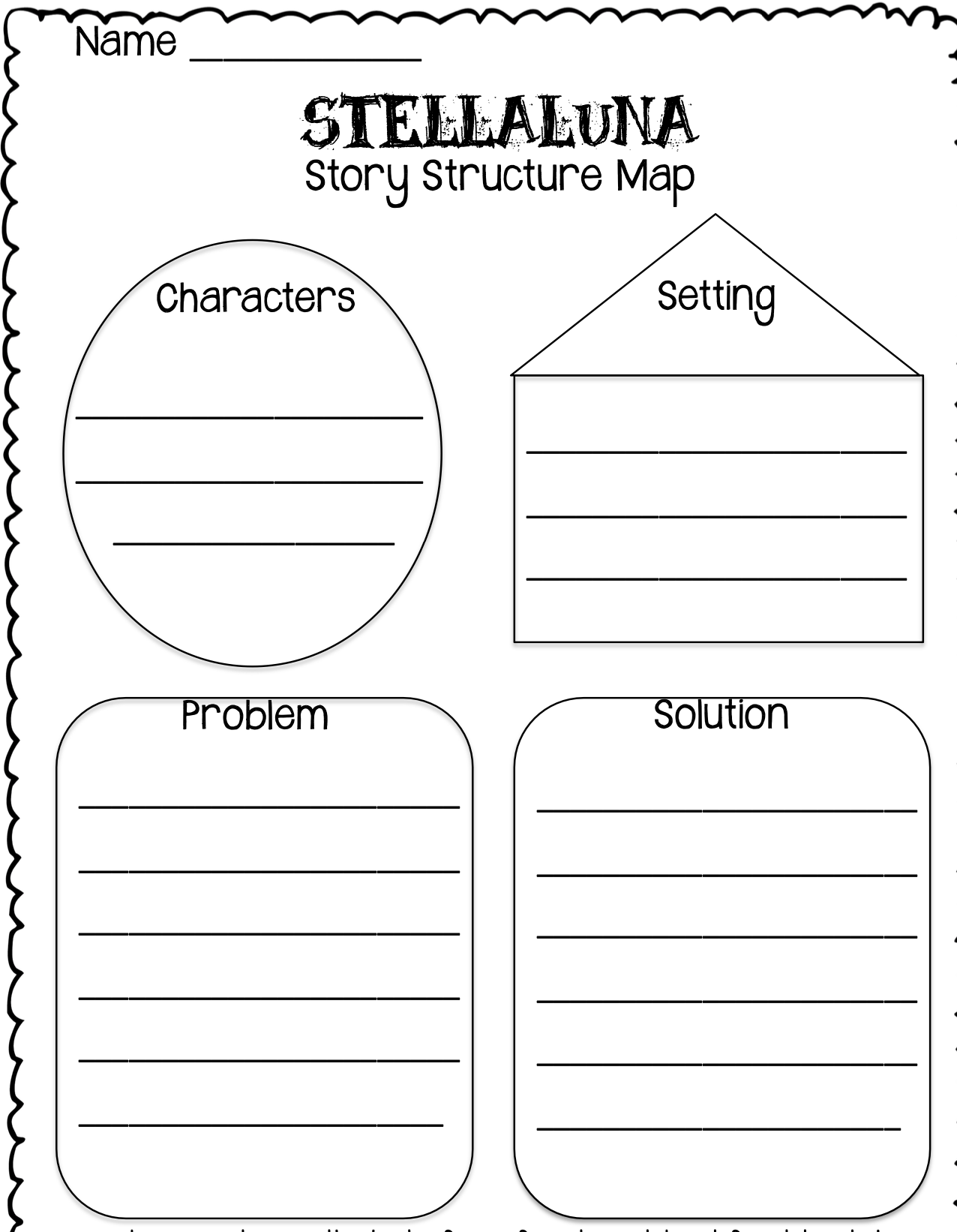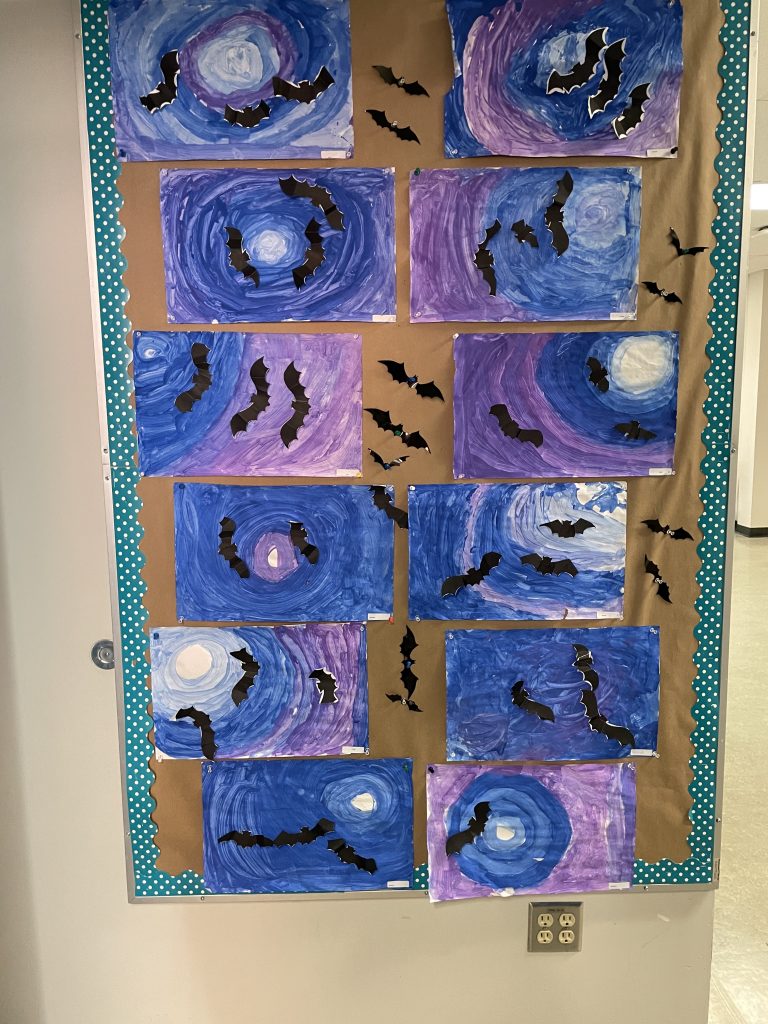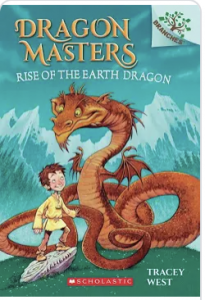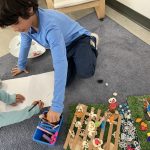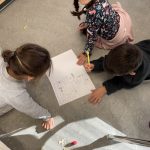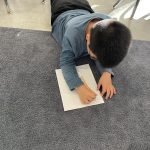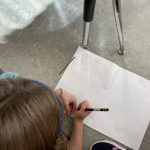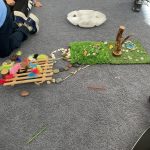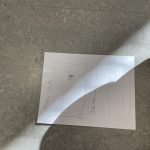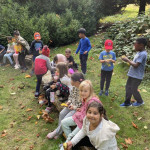After reading “My Diwali Light” we did a pointillism art activity. Pointillism is an art technique where we used little dots to colour in the picture. This took a lot of patience and focus and they turned out great!
Here is the art:
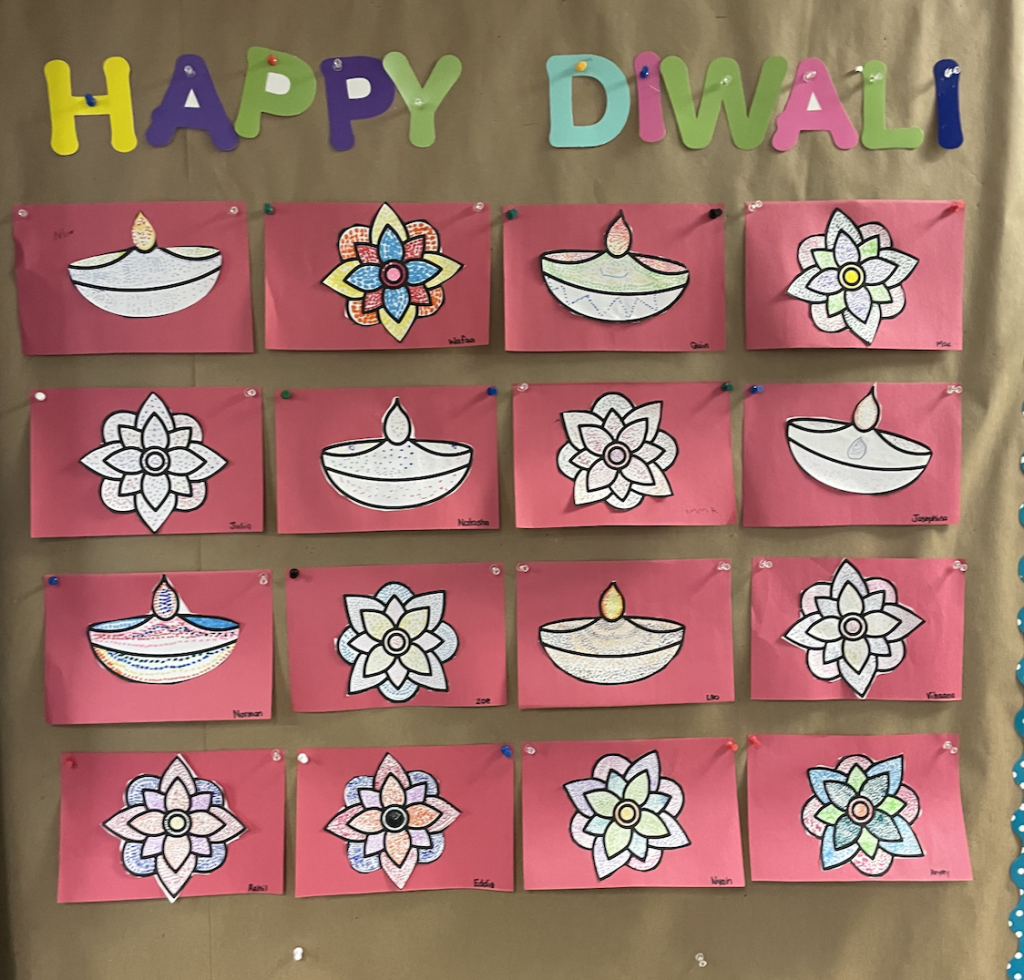
Big ideas:
- Creative expression develops our unique identity and voice
- People connect to the hearts and minds of others in a variety of places and times through the visual arts
Curricular Competency
- Explore elements, processes, materials, tools, and techniques of the arts
- Develop processes and technical skills in painting to refine artistic abilities
- Demonstrate increasingly sophisticated application and/or engagement of curricular content
First Peoples Principles of Learning:
- Learning takes patience and time
Content:
- elements of design: line, shape, texture, colour, form
Core Competency: Creative Thinking
- Creative growth requires patience, readiness to take risks, and willingness to try new approaches
Learning involved:
- Students learned the significance of following step-by-step instructions with careful considerations when engaging in art activity using mixed media
